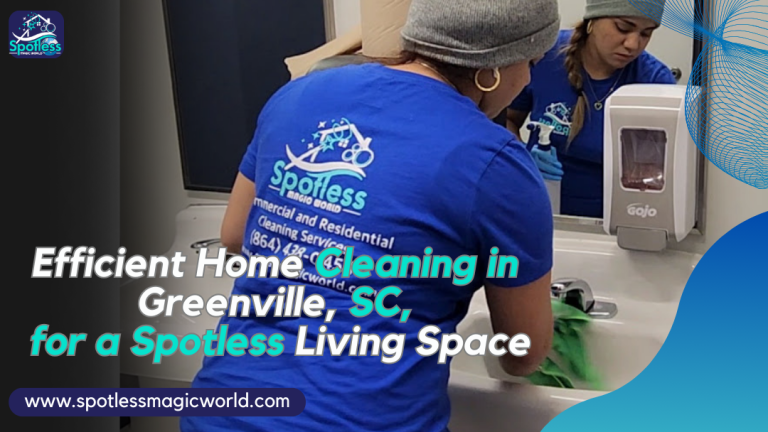Licensed And Insured

Should You Vacuum or Dust First | Cleaning Tips
Cleaning your house is essential for keeping it free from dust and allergens. However, approaching cleaning tasks without any prior plan can result in wasted time and unnecessary fatigue.
I know it’s often confusing to decide whether you should dust or vacuum first. In this article, we’ll provide you with the information you need to decide whether you should dust or vacuum first.
Should You Vacuum First or Dust First?
To address your initial query about whether you should dust or vacuum first, the straightforward response is dusting. Why? Here’s a detailed explanation.
Dusting first allows you to capture loose particles from surfaces before they settle onto the floor. This makes vacuuming afterward more effective, ensuring that any remaining debris is promptly removed.
When you begin your cleaning routine with dusting, you’re targeting surfaces such as shelves, furniture, and countertops where dust accumulates. As you dust these surfaces, you inevitably disturb the dust particles, causing them to become airborne.
However, by starting with dusting, you’re able to capture these loose particles before they have a chance to settle onto the floor. This initial step helps prevent the resettling of dust onto freshly cleaned surfaces, which can occur if you were to vacuum first.
Secondly, it allows you to capture loose particles from surfaces before they settle onto the floor. This makes vacuuming afterward more effective, ensuring that any remaining debris is promptly removed. By following this simple guideline, you can streamline your cleaning routine and achieve a sparkling, dust-free home with ease.
What Is the Best Order to Clean a Dusty Room?
Now that you’ve settled on dusting as your primary task during cleaning, it’s time to establish a cleaning sequence for tackling the rest of the cleaning process. Here’s a step-by-step guide to effectively clean your dusty room.
Step 1: Dust surfaces
Start by dusting furniture, shelves, and countertops using a microfiber cloth or duster. This removes loose dust particles and prevents them from resettling onto cleaned areas.
Step 2: Vacuum
Once you’ve dusted all surfaces, vacuum the floors, paying attention to corners and underneath furniture where dust tends to accumulate. A vacuum with a HEPA filter is ideal for trapping even the smallest particles.
Step 3: Wash hard surfaces
After vacuuming, wash hard surfaces like wood, tile, or vinyl flooring with a damp cloth or mop to remove any remaining dust and dirt. This leaves your floors sparkling clean and free from allergens.
Step 4: Clean windows
Next, clean the windows using a window cleaner and a microfiber cloth or squeegee. This removes dust and smudges, allowing more natural light to enter the room and enhancing its overall cleanliness.
Step 5: Clean bedding
If the room has bedding, wash it in hot water to remove dust, allergens, and any accumulated dirt. Clean bedding brings freshness and hygiene to your sleeping environment.
Step 6: Air out the room
Finally, circulate fresh air throughout the room by opening windows and turning on the fan. This helps to remove any lingering odors and promotes better indoor air quality, leaving your room feeling clean and rejuvenated.
By following these simple steps in the recommended order, you can efficiently tackle dust and dirt in your home, creating a cleaner and healthier living environment for you and your family.
Tips for Dusting And Vacuuming
While cleaning your house the first decision for you is to determine the dusting and vacuuming order. After determining the answer should you dust or vacuum first, you need to make your priority cleaning tasks and follow the above steps to effectively clean your house.
There are some tips given for you regarding dusting and vacuuming.
1. Use the right tools:
When it comes to dusting and vacuuming, using the right tools can make a significant difference in the effectiveness of your cleaning efforts. For dusting, opt for tools such as microfiber cloths or dusters, which are designed to attract and trap dust particles rather than simply spreading them around.
Similarly, choose a vacuum cleaner with appropriate attachments for different surfaces, such as a soft brush attachment for delicate surfaces and a crevice tool for reaching tight spaces. Investing in high-quality cleaning tools will ensure thorough and efficient cleaning results.
2. Dust from top to bottom:
When dusting, working from top to bottom is essential to prevent redistributing dust onto already cleaned surfaces. Start by dusting higher surfaces such as shelves, ceiling fans, and light fixtures before moving on to lower surfaces like furniture and baseboards.
By following this top-to-bottom approach, you’ll effectively capture and remove dust without having to re-clean areas that have already been dusted.
3. Use the right dusting technique:
Effective dusting requires more than just wiping surfaces with a cloth. To maximize dust removal, use a gentle but firm touch when dusting, ensuring that you’re not simply pushing dust around.
For flat surfaces, use long, sweeping motions to capture dust effectively. When dusting intricate surfaces or objects, such as lampshades or decorative items, use a gentle tapping or brushing motion to dislodge dust without causing damage.
Additionally, consider using a slightly dampened microfiber cloth for stubborn dust buildup, as moisture can help capture and trap dust more effectively.
4. Don’t forget hidden areas:
While dusting and vacuuming visible surfaces is essential, it’s equally important to address hidden or often overlooked areas where dust tends to accumulate.
These areas may include behind furniture, under appliances, inside cabinets and drawers, and along baseboards. Use the appropriate attachments on your vacuum cleaner to reach these hidden areas and ensure thorough dust removal.
Regularly addressing these hidden areas will help prevent dust buildup and maintain a cleaner overall environment.
5. Choose a good-quality vacuum:
A good-quality vacuum cleaner is essential for effective dust removal and overall cleanliness. When choosing a vacuum cleaner, opt for one with a HEPA filter, which can capture smaller particles such as dust mites, pet dander, and allergens.
Additionally, consider factors such as suction power, maneuverability, and ease of maintenance. Investing in a high-quality vacuum cleaner will not only make dusting and vacuuming more efficient but also contribute to better indoor air quality and a healthier home environment.
By incorporating these tips into your dusting and vacuuming routine, you can achieve more thorough and effective cleaning results, leaving your home cleaner, healthier, and more comfortable for you and your family.
Wrapping Up
By prioritizing dust removal from surfaces before tackling the floors, you ensure a thorough elimination of dust and allergens from your living space. Additionally, following a step-by-step cleaning order, as outlined in the guide, allows for a comprehensive cleaning of your dusty room, leaving it fresh, hygienic, and inviting.
Follow Spotless Magic World for more such cleaning tips. Contact us to get the best house cleaning service in Greenville.



